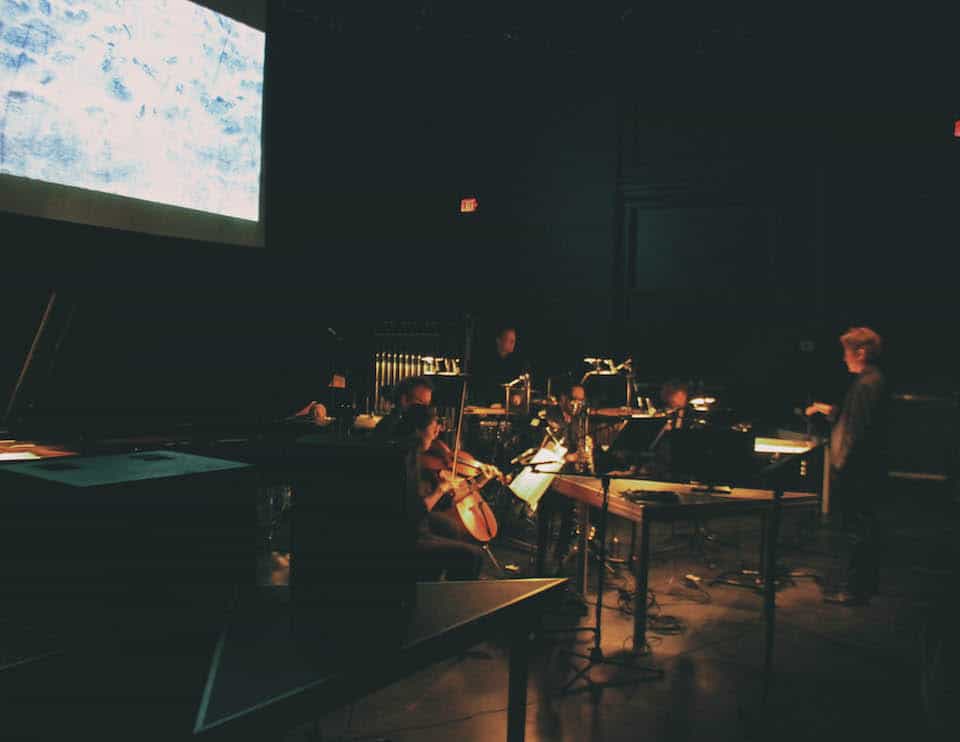What happens when you mix the latest wave of contemporary symphonic music with that of modern scientific discoveries? It’s a question I had never asked myself before attending Collide, a multi-disciplinary show that brought together recently commissioned musical compositions with the work of a U of T physics professor, in an attempt to create an immersive experience for the audience.
Collide was a collaboration between Continuum, a Toronto organization that promotes contemporary music, and Subtle Technologies, a group that aims to “bring together scientists, technologists, engineers, artists, and the general public.” The event was set at the Theatre Centre, a venue that prides itself for putting on shows that combine experimental theatre and multimedia performances.
The first piece at Collide was entitled Ice, and featured the musical works of Quebec-based Jimmie LeBlanc, and the scientific studies of U of T physics professor Dr. Stephen Morris. The goal of the piece was to combine live music with graphics from his Ice Atlas — a database of icicle shapes evolving over time. In order to put the science together with the music, you need a media artist — the part played by OCAD graduate Fareena Chanda.
When I entered the theatre, I was given a choice to either watch the show the classic way, in the main theatre stage, or to enter the immersive experience, which I chose without hesitation. I was led into a dark room where about 30 other people were sitting in a squared off area with three large projector screens around them.
The symphonic band played for 20 minutes as the three projector screens gave a close-up view into the complicated process of icicle formation. The music attempted to reflect the evolution of natural phenomena as it occurred, with large dynamic contrasts and, as is the case with much contemporary music, no distinct melody line. While the sounds went well with the icicle images on the screen, it was difficult, at times, to see a direct connection between the changes in the icicles and the dynamics of the music. Regardless, it was an effective piece, and it had different reactions on different members of the audience. Some appeared lost in a trance, with their eyes closed, while others looked around at the screens to view every slight change. It was certainly a new experience for many attending that night.
The evening concluded with a few more short musical pieces on the main stage, which included one about far-out galaxies with a video playing above, and a solo vocal work about Alan Turing. Since the videos shown were not of high production quality, it seemed that the music was the main focus. Despite the music’s twists and turns, the musicians performed quite well.
Contemporary symphonic music has a reputation for being an acquired taste. I suggest to the reader if you haven’t heard any, to go out and give it a listen. It’s a different experience for everyone, and you may be surprised by what you may find in it.


